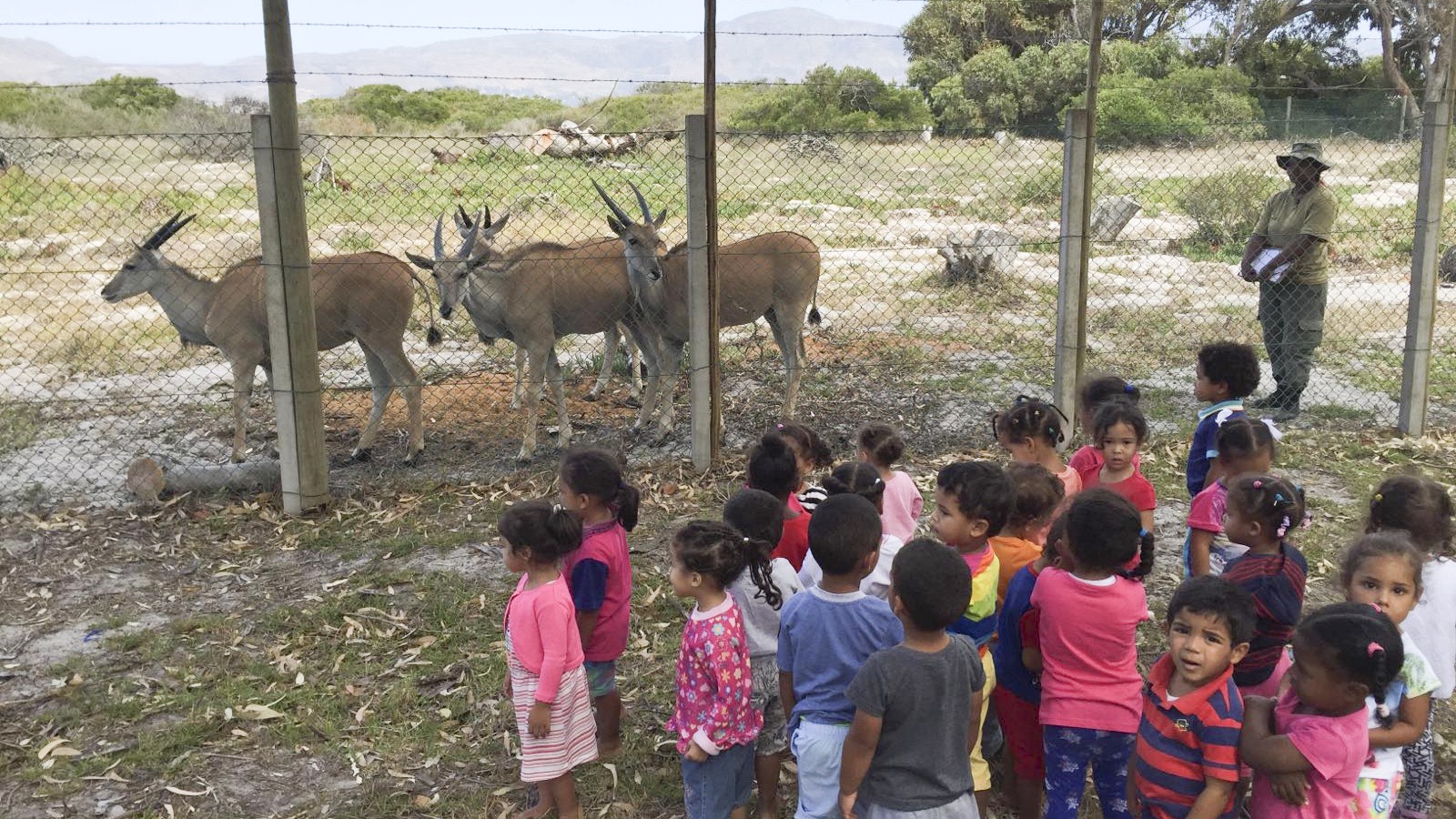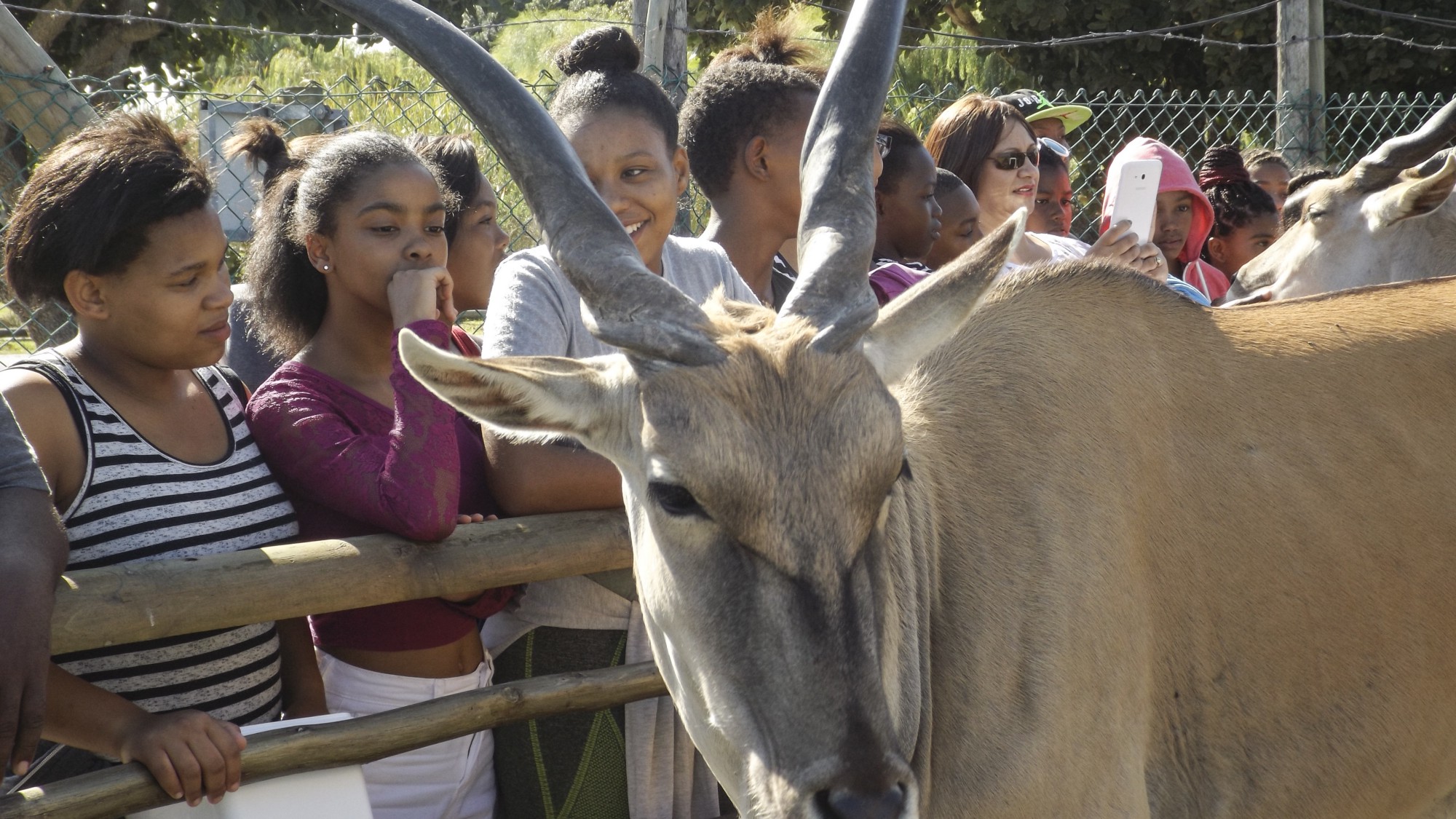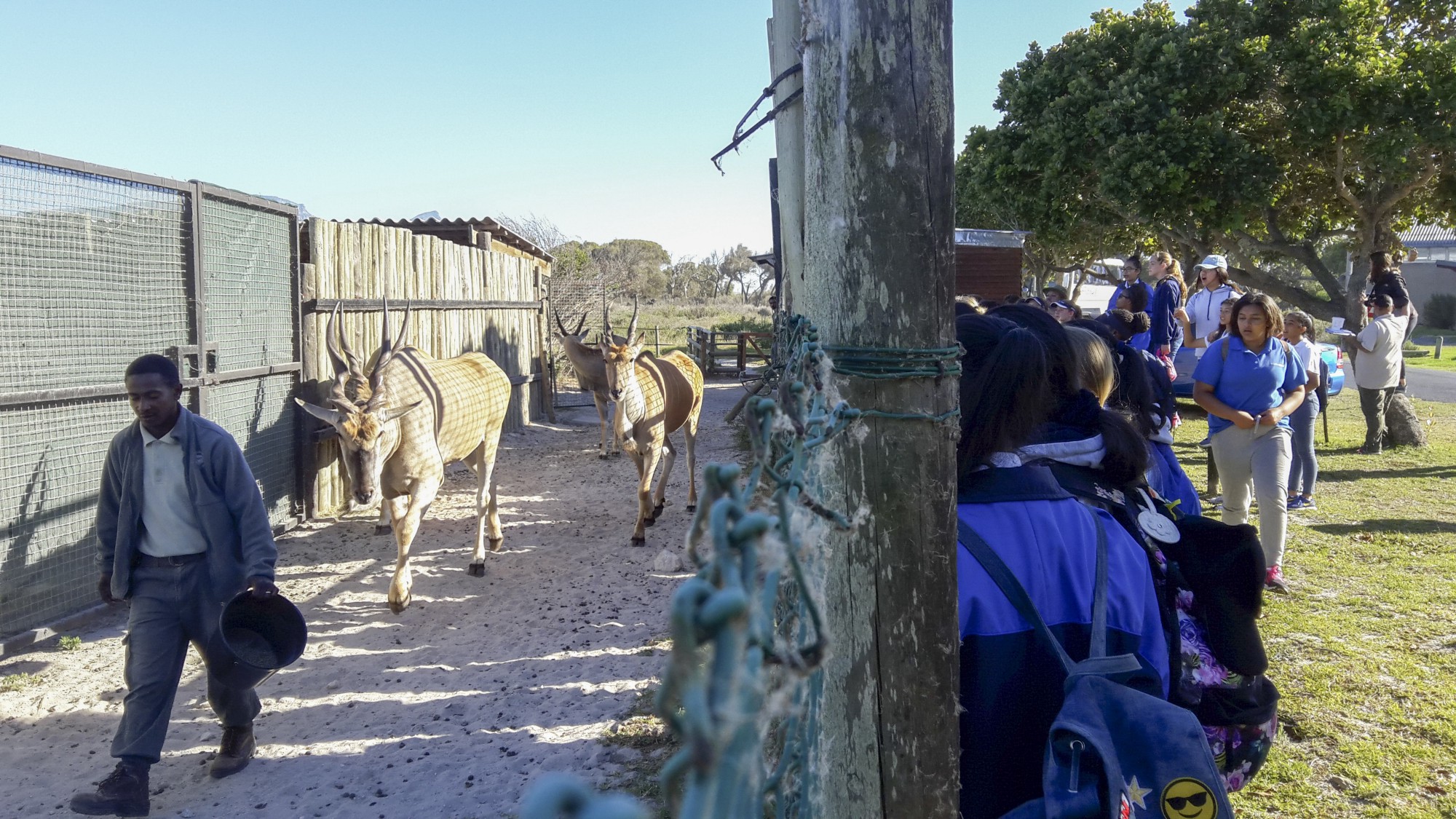Five of the world’s largest antelope have become heroes of South Africa’s Endangered Cape Flats Dune Strandveld, thanks to a new urban biodiversity project that has reintroduced eland to the area to tackle bush encroachment.
Eland have been absent from their home range for over 200 years, but thanks to the Gantouw Project Mike, Gibbs, Uniqua, Berni and Little P are back home, and grazing fiercely on the dominant woody bush to restore balance in the ecosystem and allow biodiversity to thrive.
The project is a partnership between The City of Cape Town’s Biodiversity Management Branch and the Cape Town Environmental Education Centre (CTEET). We spoke to project manager and winner of the SAN Parks Kudu Award for Women in Conservation Petro Botha about the project.
WildArk: What is the Gantouw Project?
Petro: The Gantouw Project is a ground-breaking research study using eland as a bush management tool, to combat bush encroachment and restore the biodiversity of the endangered Cape Flats Dune Strandveld.
WildArk: Where are the Eland based?
Petro: At the Rondevlei section of the False Bay Nature Reserve, in Grassy Park.
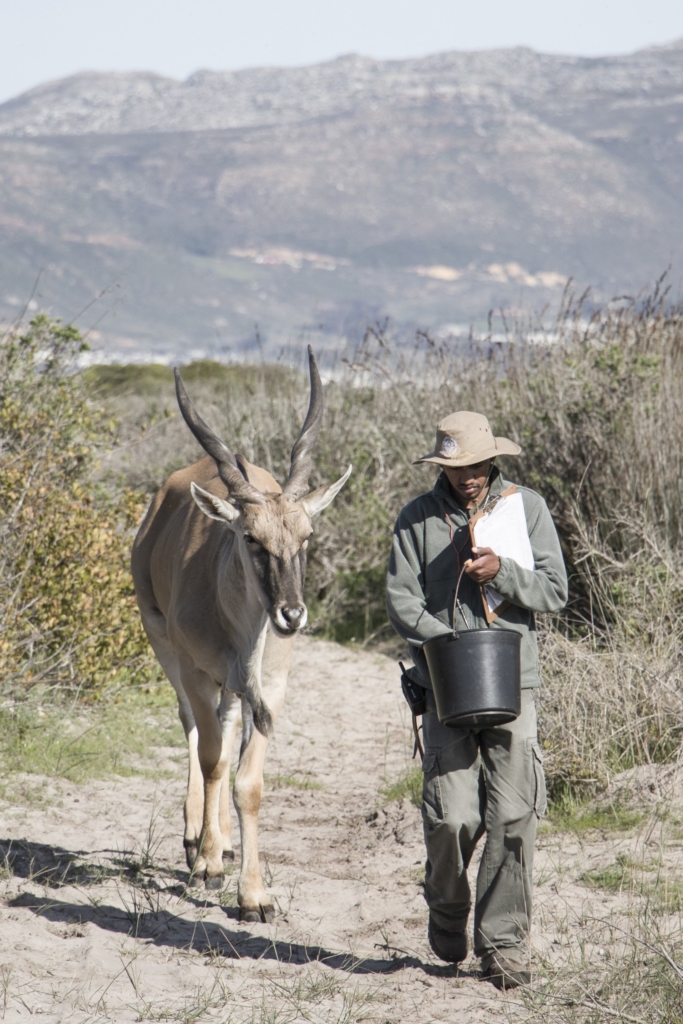
An Eland monitor lures one of the eland back to the boma
WildArk: Why have you chosen Eland?
Petro: Eland used to occur here naturally, but they haven’t been in this area for over 200 years. They are large herbivores that have a big impact on bush encroachment (shrubs over a meter and a half high). They are easy to manage, and after they are habituated, you can herd them like cattle which works for this project. They are also a large part of the local Khoi San culture and bringing them back was a way to connect with the community.
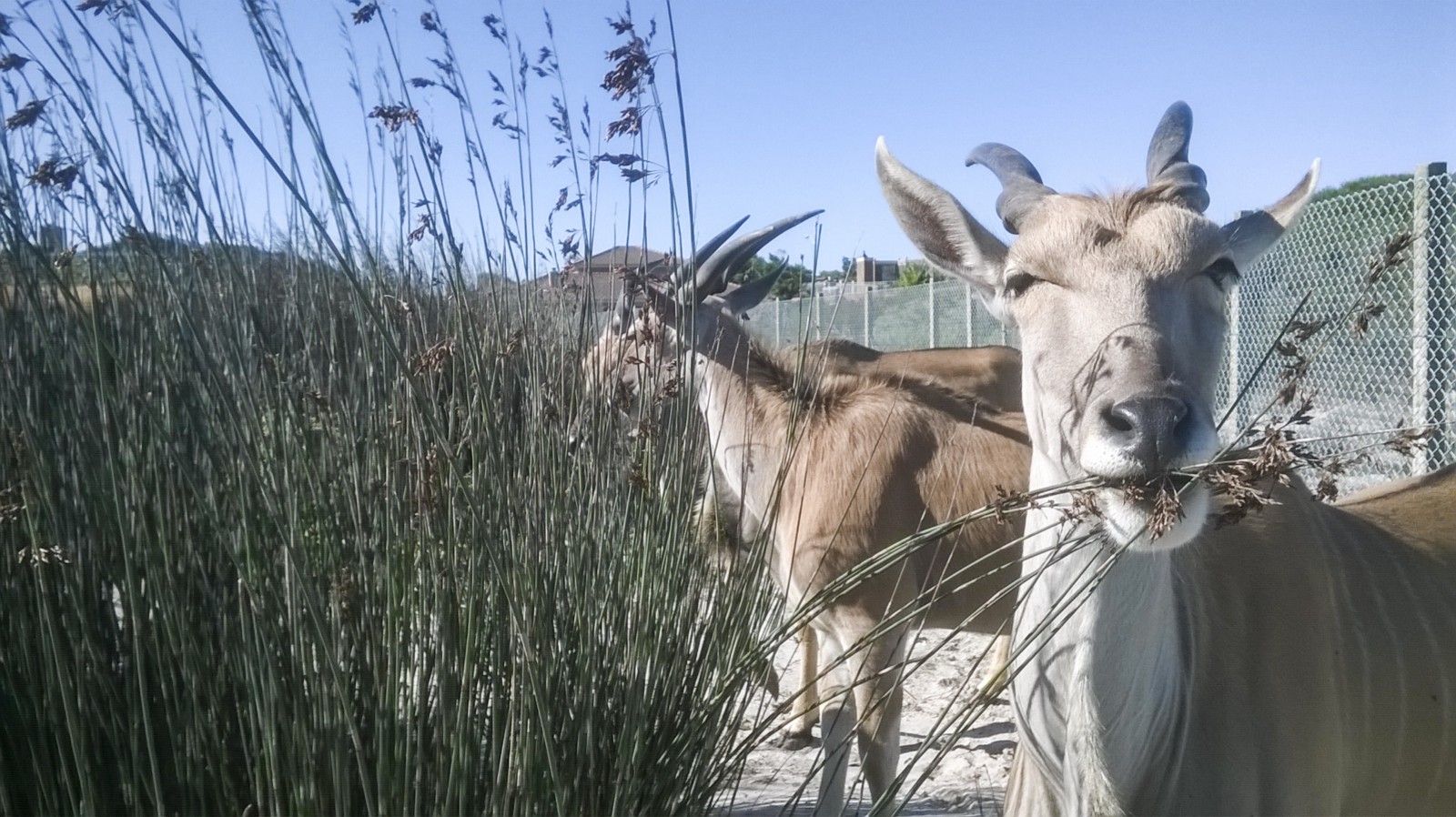
The world’s largest antelope the eland is being used to prevent bush encroachment on the Cape Flats Dune Strandveld.
WildArk: What kind of research are you doing?
Petro: We first had to determine what the eland are feeding on in Cape Flats and if they had preferences so that we could predict what plants would be targeted when we moved them to new sites. We did this by employing eland monitors who would spend all day with the eland, making five-minute observations on what species of plants the eland were targeting.
We did vegetation surveys before and after they arrived to determine changes to species volume. We set up camera traps to find out the eland’s impact on other wildlife — we found that there has been an increase in animal activity (in particular birds and rodents) as the bush has opened up and more habitat has become available, which we expected.
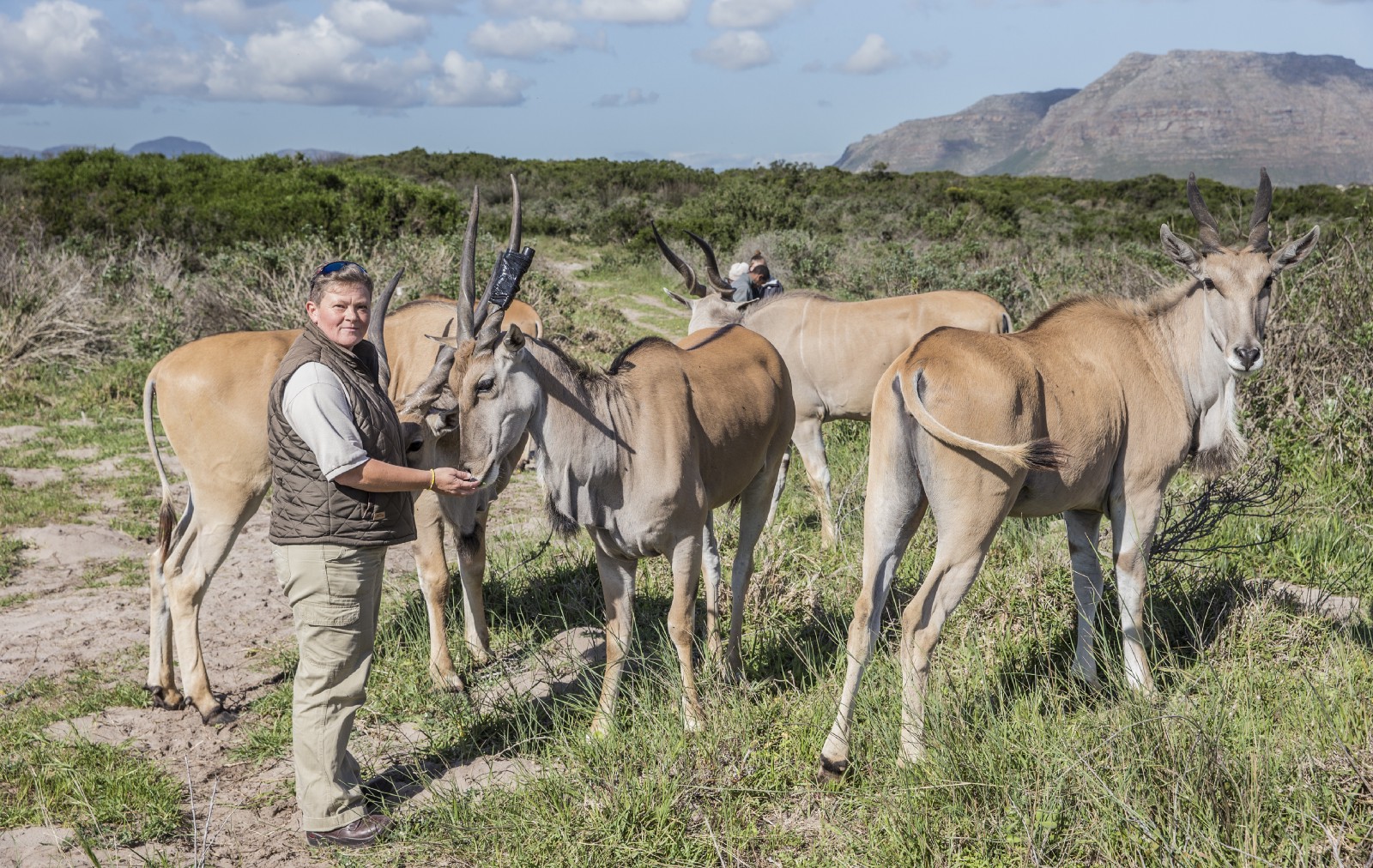
Gantouw Project Manager Petro Botha in the field with her eland.
WildArk: What impact has the project had on the community?
Petro: It has created jobs for local youth whom we trained to become field rangers to help with data collection. The eland have become ambassadors for conservation, and the community is suddenly more interested in the reserve and the endangered Strandveld. People want to come and see the eland and are more interested in learning about the ecosystem and the impact of taking large herbivores out of an area.
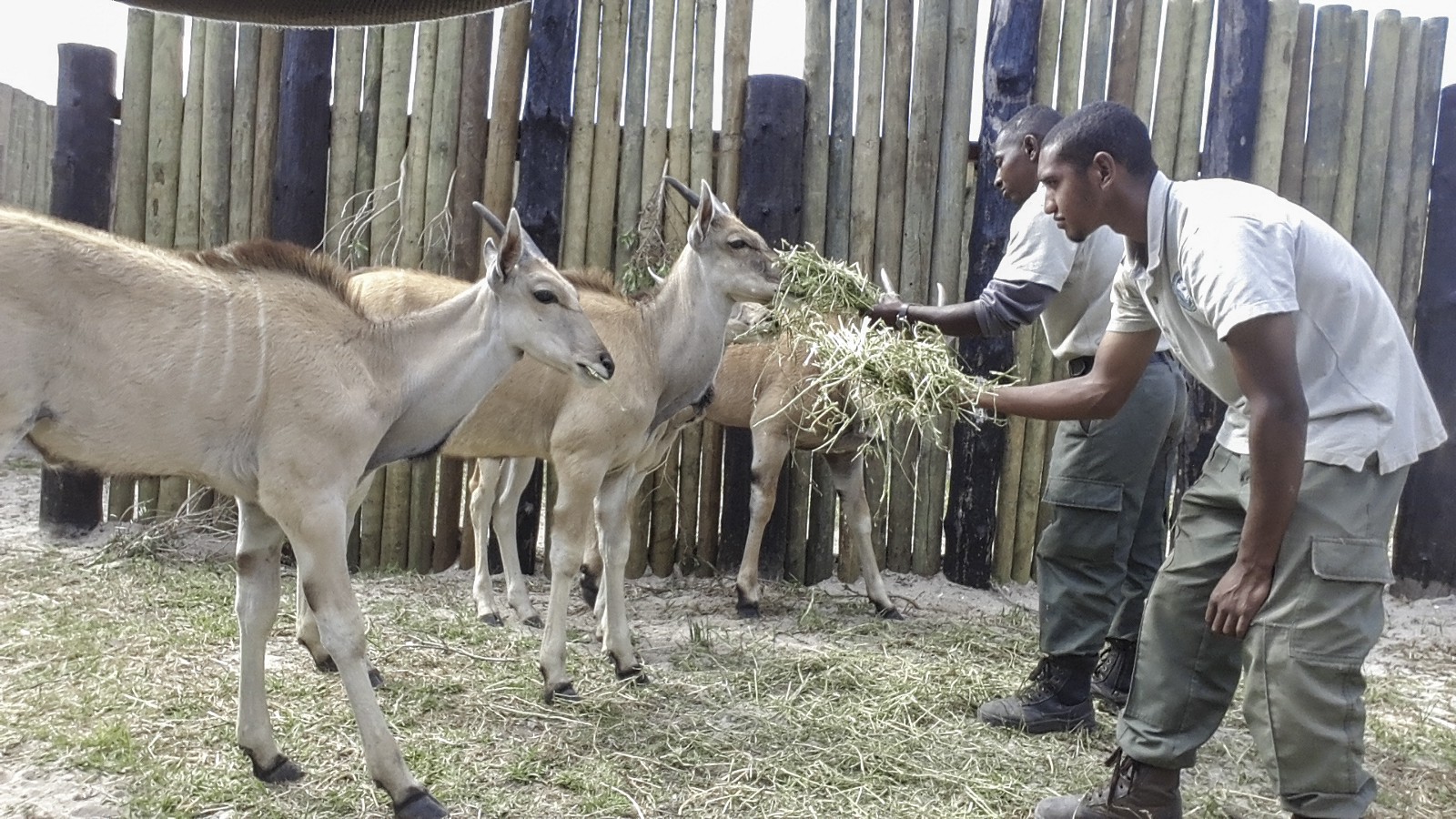
Eland monitors working to habituate the young eland in their boma.
WildArk:How will this research help?
Petro: It is a new prospect having large herbivores back in the Cape because until now, people relied on fires to combat bush encroachment. We are not saying do away with fires, but we want to provide reserve managers with an alternative bush management tool and show them the additional benefits of this tool.
WildArk: Will you breed the eland?
Petro: Not at this stage. They are a management tool, and five eland is a manageable group size. They need to return to the boma every night for safety reasons as the fence line gets stolen almost daily in specific areas and we are worried about poaching as it’s a high crime area. Also, the Strandveld is fragmented due to urbanization, so it’s not feasible to reintroduce the species naturally. Instead, we will use these few animals and mimic their natural migration route, moving them to different reserves using a trailer.
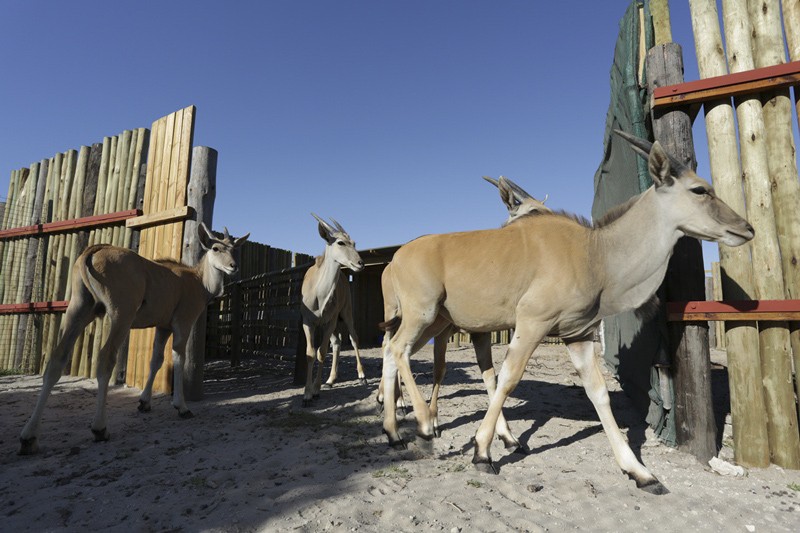
Eland must return to the boma each evening for safety reasons.
WildArk: What has been the reaction from the public?
Petro: It has been so positive. The local community loves the eland and doesn’t want them to leave. We get a lot of visitors to our Facebook page, and there is a lot of interaction between people that have fallen in love with the animals. It’s beautiful because the boma is close to a road, so a lot of people travel in and out every day, and it makes their day to look out for the eland every morning and evening when they come home.
